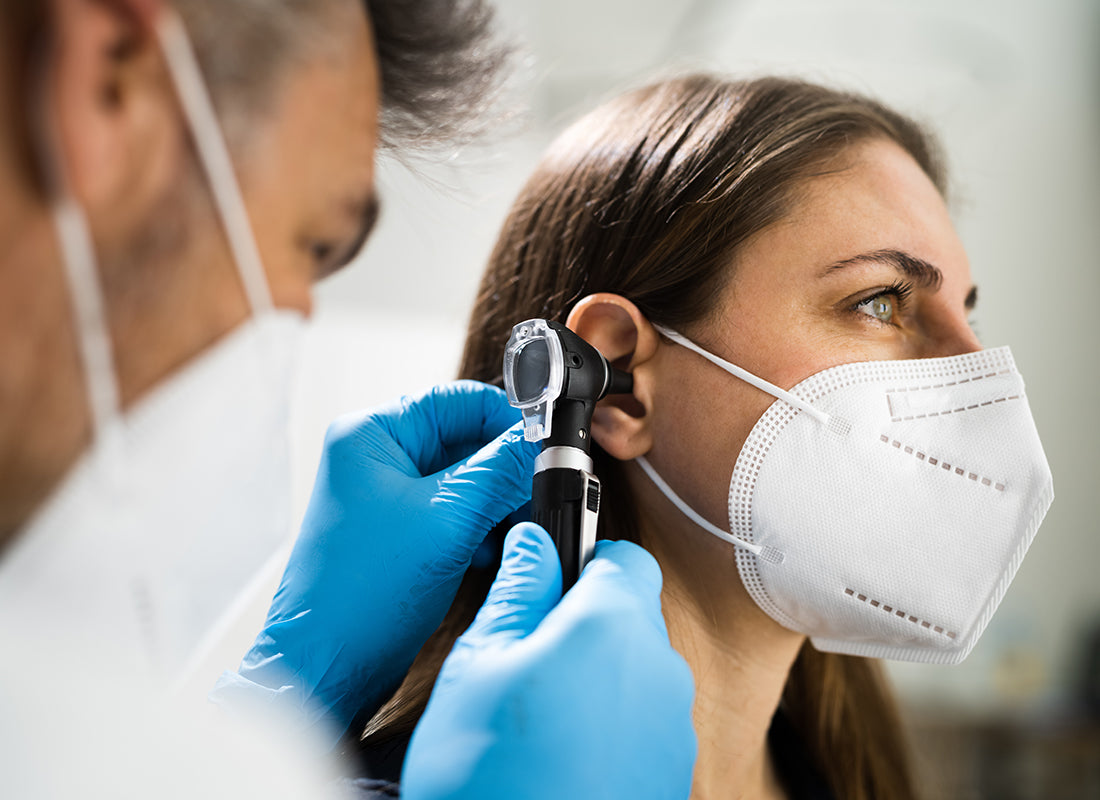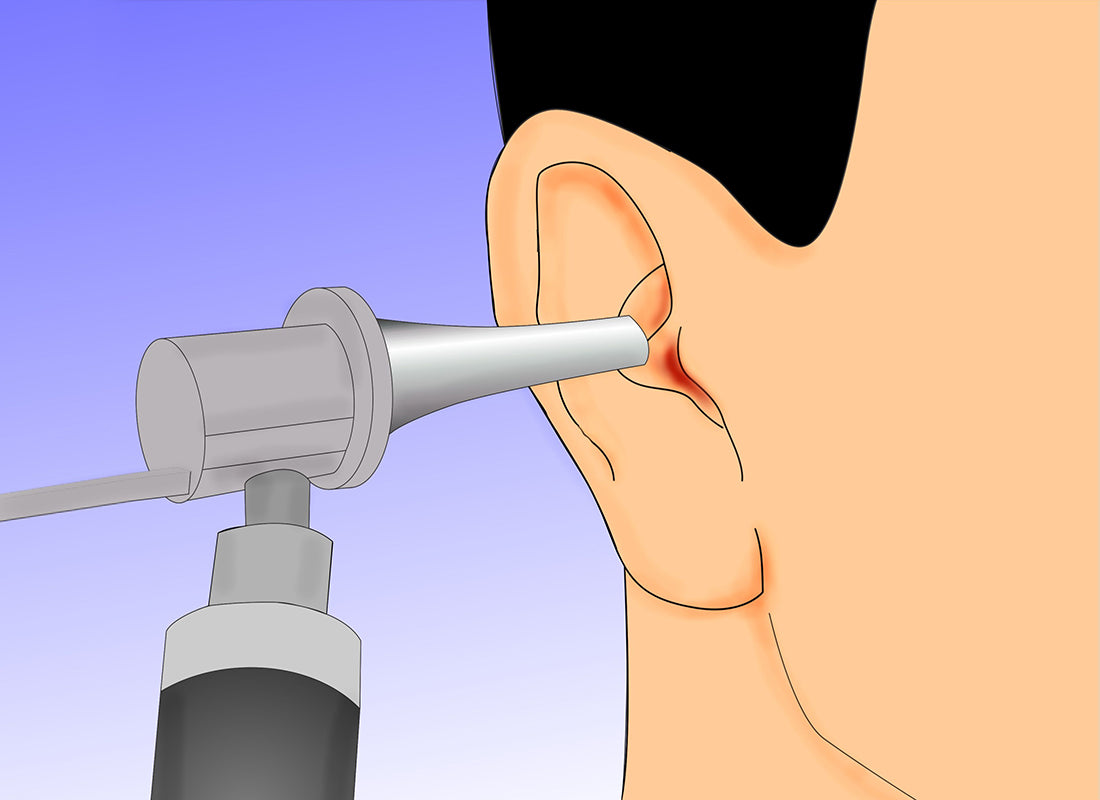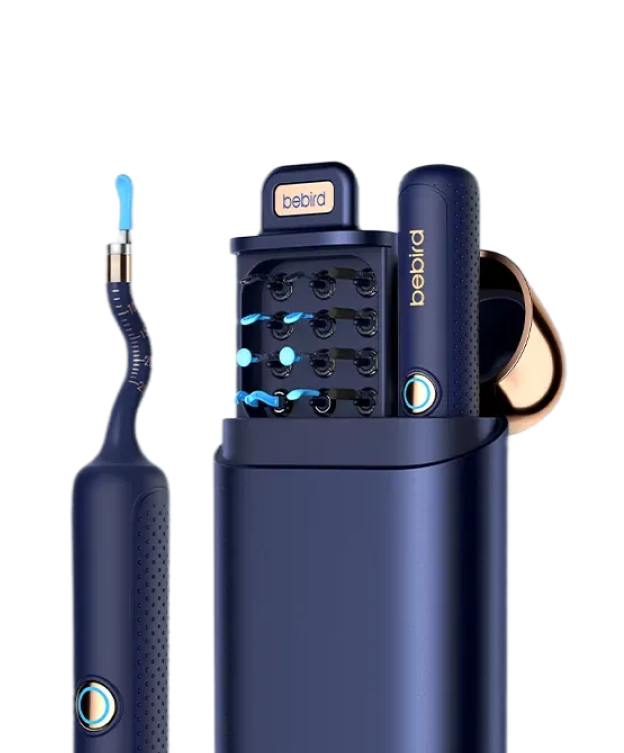Whether it is impacted ear wax or fluid coming out of the ear, anything unusual makes you uncomfortable and stressed, right? So, are you suffering from fluid drainage in your ear and do not know what to do about it?
If yes, worry no more as we are going to guide you about everything you need to know about fluid in the ear. So, let us talk about what the fluid in the ear looks like, what are the causes behind it, how to get rid of fluid in the ear at home, and how to prevent its accumulation in the first place.
Table of Contents
- Part 1: What Does Fluid in the Ear Look Like?
- Part 2: What Causes Fluid in the Ear in Adults?
- Part 3: How to Get Rid of Fluid out of the Ear with Home Remedies?
- Part 4: How to Prevent Fluid in the Ear?
Part 1: What Does Fluid in the Ear Look Like? Fluid in the Ear Symptoms
If you think about having fluid in the ear, you will imagine your ears being damp, right? However, that is not all too fluid in the ear. At times, the fluid is present behind the ear drum or deep into the ear.
In such cases, it produces occur symptoms. So, let us talk about all the fluid in the ear symptoms here.
Fullness or Heaviness
Having something other than usual in the ear, especially fluid will make your ear feel full and heavy. So, it is probably the first symptom you might notice.
Earache
As the fluid blocks the ear, it can also irritate the nerves or prop up the result. As a result, you feel a sharp or dull pain in the ear.
Blocking of Ear Canal
If the fluid in the ear is excessive, it can block the whole ear canal instead of only the inner ear.
Interference of Fluid with Hearing
Reduced entry of air along with a blocked ear canal causes muffled hearing. Also, the person experiences fluctuation in hearing on changing the position.
Ear Discharge
Fluid from the ear can drain out of the ear by changing posture or during sleep. It is because of the thin consistency of the fluid and the effect of posture on the contents of the ear canal.
Color and Contents of Fluid
The colors, contents, and smell of the fluid provide important information about diagnosis. For example, a pus-like fluid signifies infection and a bloody discharge shows trauma.
Itching and Discomfort
Itching and discomfort might be one of the initial clinical features of fluid accumulation in the ear. This is because of the contact of the fluid with the ear and skin.
Ringing in the Ear
As the fluid in the inner ear interferes with its functions, you can hear ringing sounds in your ear, a condition called tinnitus.
Crackling or Rustling Sound
The movement of the fluid inside the ear and its relation with the wax and anatomy of the ear might make you hear crackling sounds. This sound feels like you are walking or air is blowing through dry leaves.
Loss of Balance
Loss of balance and dizziness can also be associated with vertigo. It is because the inner ear helps in maintaining balance of the body.
Associated Fever
If fluid in the ear becomes infected, your body temperature also rises. Therefore, you have to check your temperature regularly as well.
Part 2: What Causes Fluid in the Ear in Adults?
Not everyone experiences fluid either, it is a common happening, right? So here are the 7 reasons why you might have fluid in the ears.
1. Ear Infections
The most common cause of fluid accumulation in the ear is the infection of the middle ear. This infection, called otitis media, results from the invagination of microbes like bacteria, viruses, and fungi into the ear.
In this case, you rarely see fluid in the external ear as it is accumulated just behind the eardrum.
2. Foreign Body Impaction
Entry of a small foreign body triggers a reaction in the ear as a response of the defense system to a foreign body. Pus starts to accumulate in the ear and at times there is also blood. So, get your ears checked to see if there is foreign body impaction that gained entry without you knowing.
3. Ear Tumor
Tumors of the ear, especially cholesteatoma are associated with discharge from the ear. Also, this discharge is often foul-smelling and contains blood.
4. Head and Face Trauma
Our ears are in contact with the nose and throat. So, trauma to the front, middle, or rear cranial fossa can cause otorrhea. However, in this case, there is always a history of head injury.
5. Allergy
Hypersensitivity reactions in the ear to earphones can cause fluid in the ear. In addition, other allergies, colds, flu, sinusitis, and eczema also produce fluid that can drain into the ear.
6. Blockage of Eustachian Tube
The eustachian tube is a tube-like structure that connects the ear to the throat. Its opening and closing are guided by swallowing and its blockage can occur due to swelling of adenoids, common cold, and allergies. Along with the swelling, fluid builds up in the ear.
7. Swimmer’s Ear
Swimmer’s ear is the infection of the external ear which commonly occurs in swimmers or other people who stay drenched in water. Staying in water for a prolonged time reduces the physical defense of the skin against microbes. Resultantly, infection causes ear discharge.
8. Trauma to Ear Canal
The use of cotton buds, hair pins, or any random objects in the ear can damage the tympanic membrane. Injury to the tympanic membrane is associated with discharge in the ear.
Additional causes of trauma to the ear canal include,
- Acoustic trauma caused by unbearably loud sounds
- A change in the pressure of surroundings while flying or scuba diving
Part 3: How to Get Rid of Fluid out of the Ear with Home Remedies?
While you might need to get your ear fluid treated at a clinic, some conditions can be dealt with at home as well. So, let us explore the home remedies on “how to get fluid out of the ear”.
Examine the Ear with an Otoscope
Before trying any home remedy at home, you need to know if to diagnose fluid in the ear. For this, it is advised to check your ear with the help of an ear camera, also called an otoscope.
Bebird Note5 Pro Ear Camera Wax Removal Tool comes with a 10-megapixel camera and LED lights. Therefore, it can help you analyze the condition of your ear, the contents, and the color of the fluid. Furthermore, it prevents any damage to the ear canal while you are looking into the ear.
Home Remedies to Get Rid of Fluid in the Ear
After you have examined your ear with an otoscope, you can move to the following remedies to get rid of the fluid in the ear.
1. Moving Your Ear Lobe
The easiest method to get rid of the fluid from the ear if your ear is in a healthy condition is to jiggle it out. For this, turn your head to one side in a way that the ear faces downwards, hold your ear lobe, and move it in a to and fro direction gently, and you will see the fluid draining out of the ear. Also, do this process on a sink.
2. Gargling
Gargling is effective in treating fluid in the ear as it helps in reducing inflammation and opening the eustachian tube. Furthermore, the process is pretty simple.
You can perform this method by dissolving a spoon of salt in a glass of warm water, taking a sip of water, turning your head backward, and Gargling for a few seconds until you feel that your ears are open.
3. Steam Inhalation
Allergies, colds, flu, and sinusitis close the sinuses and eustachian tube while preventing the free drainage of fluid in the ear. Under such circumstances, steam inhalation can help you.
For this, use a digital steam inhaler or a pot with hot water, cover your head with a towel, and inhale the steam. Also, note that you have to breathe in the steam through your nose.
4. Vacuum Creation
Just like micro suction which is a professional procedure, you can create a vacuum in the ear at home to remove the fluid. All you have to do is, turn your head to a side slightly, make a curve of your palm, and keep it on your ear in a way that your ear is closed.
After that, flatten the palm and make a cup of it again. Repeat the process a few times
5. Making Use of Gravity
If you are a side sleeper or other methods seem difficult for you, try gravity drainage of the fluid. For this method, keep a cloth or towel on a pillow, place your head on the pillow turn it to the side of your ear with a fluid, and wait for a while until the fluid is drained.
6. Using Ear Drops and Sprays
At times, impacted wax causes fluid accumulation in the ear. Therefore, treating this hard wax will solve the symptoms of fluid in the ear as well.
In this case, buy over-the-counter ear wax softening sprays or drops, put them on your ear rest until they are absorbed, and repeat the procedure 2 to 3 times for a few days.
7. Treating Associated Symptoms with Over-the-counter medication
If you have a health condition that is the cause of fluid accumulation in the ear, you need to treat that disease as well. Therefore, you can take over the following counter medicines,
- Antihistamines for allergies
- Antibiotics for infections
- Anti-inflammatory drugs for swelling
- Decongestants for congestion in the nose, ear, or throat
Potential Risks and Cautions Associated with at-Home Drainage
Here are some risks and cautions associated with at-home removal of the fluid from the ear.
1. Failure to Drain the Fluid
The commonest risk of home remedies is the failure of the treatment. At times, you either fail to get rid of the fluid from the ear or it accumulates no matter how many remedies you try. In such cases, you need to visit a doctor.
2. Infecting the Fluid with Foreign Bodies
The home remedies we mentioned above do not involve using any substance or equipment in the ear. However, some people try putting weird objects in the ear to drain the fluid. Such objects infect the fluid instead of clearing it.
3. Risk of Damage to Ear Canal
In addition to infection, using foreign bodies like cotton buds in the ear can damage the ear canal by perforation of the tympanic membrane. Therefore you must not use any foreign body to drain fluid at home.
4. Aggravating the Condition with Improper Care
If you drain the fluid over and over again instead of treating the root cause, the condition is aggravated instead of being resolved. So, visit a doctor and get yourself treated when necessary.
Part 4: How to Prevent Fluid in the Ear?
Prevention is the best cure, right? So, let us talk about ways to prevent fluid accumulation in the ear.
Tips for Preventing Fluid Build-up in the Ear
Excess fluid in the ear accumulates and causes discomfort. So, here is how you can prevent fluid buildup in the ear.
Do Not Let Water Get into the Ear When You Swim:
A swimmer’s ear is a common cause of drainage. So, cover your ears with earbuds to prevent the entry of water into the ears when you swim.
Dry the Ear Carefully After Showering and Sweating:
Do not put your ears directly under a stream of water when you are taking a bath. Additionally, dry your ears with a towel or washcloth after showering and sweating profusely.
Get Your Allergies Treated:
If you get seasonal allergies or are allergic to a particular thing, ensure that you get proper treatment for it. Treating allergies will prevent the block of the eustachian tube and thus fluid in the ear.
See a Doctor When Needed:
If you have an earache, fever, foul-smelling discharge, or pus in the ear, get yourself checked by a professional instead of treating the discharge at home.
Lifestyle Tips to Improve and Maintain Health of the Ear Canal
Some lifestyle tips can also help in preventing fluid accumulation and other issues of the ear canal. These tips include,
- All basic vaccinations from birth to date
- Quit smoking, alcohol, and excessive use of caffeine
- Exercise regularly and maintain your body weight
- Wash your hands before and after touching the ear
- Maintain ear hygiene by cleaning the ears regularly
- Checking your ears regularly
Checking the Condition of the Ear Canal Regularly
By checking your ears regularly, we do not mean you insert a Q-tip into the ear to see the wax or other materials present in the ear. Instead, give yourself a Bebird Note5 Pro Ear Camera Wax Removal Tool to look into the ear.
It will also help you remove the wax if it is accumulated in the ear and foreign bodies as well.
Conclusion
Fluid accumulation in the ear can result from several factors including blockage of the eustachian tube, inflammation of the ear canal, and more.
After ensuring that this fluid buildup can be treated at home, you can try 7 home remedies we discussed in this article to get rid of the fluid in the ear.
















Leave a comment
All comments are moderated before being published.
This site is protected by hCaptcha and the hCaptcha Privacy Policy and Terms of Service apply.